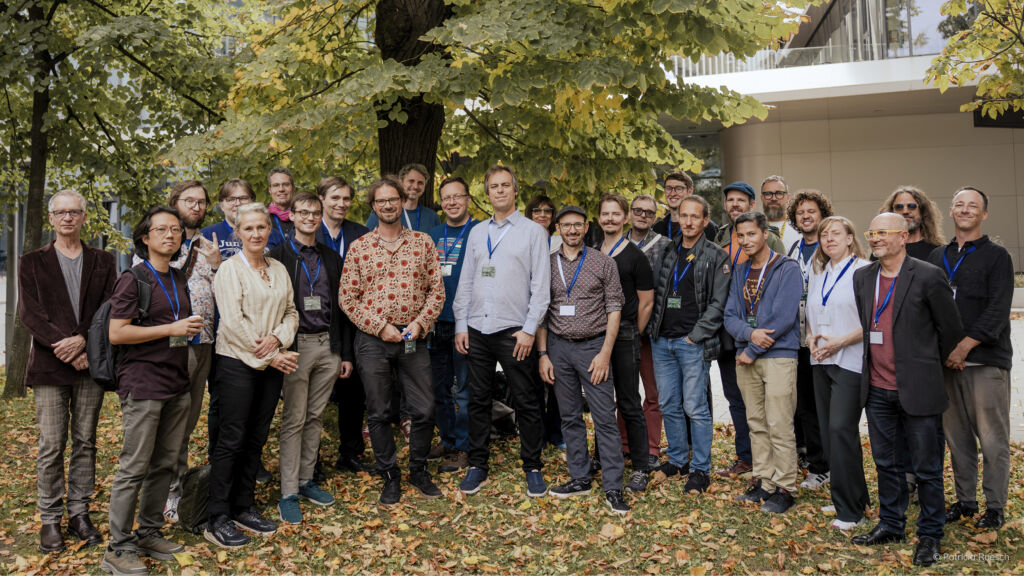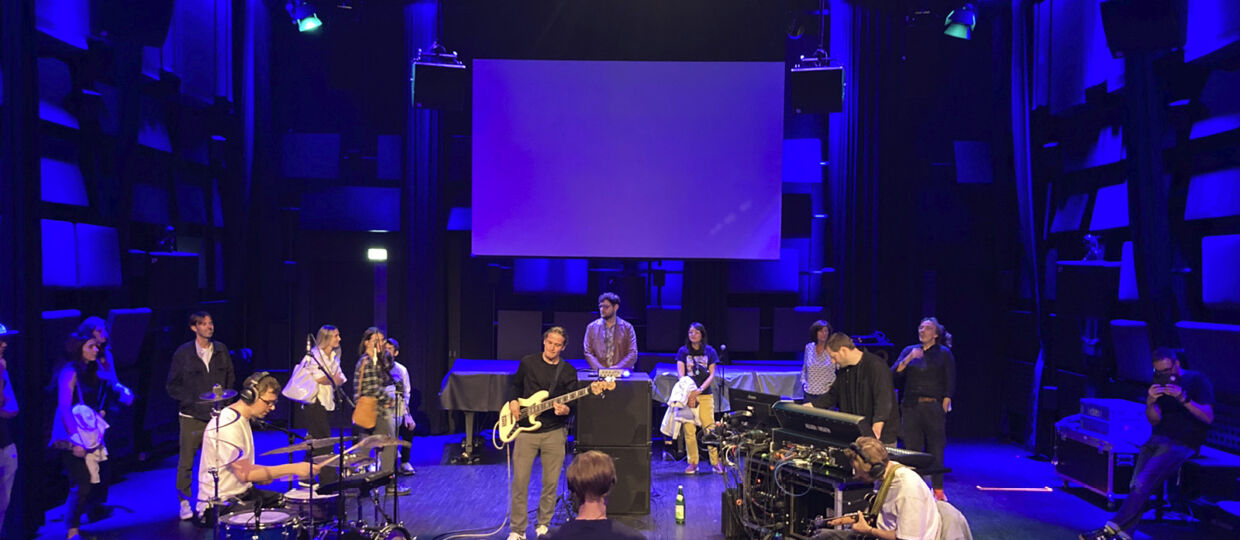An Interdisciplinary Conference on Microrhythm and Groove in Popular Music
Anyone who listens to the song “My Favorite Part” by Mac Miller and Ariana Grande (2016) for the first time might wonder about the programmed drumbeat, which sounds “skewed” or “wobbly”. Much like in this hip hop track, the rhythms that feature in numerous styles of popular music strike us as interesting precisely because they don’t adhere to mathematically exact patterns of pulse divisions but instead diverge from them to a minimal extent. This phenomenon of microrhythm and the associated impression of “groove” were the topics of a conference entitled Rhythm under the Microscope, which took place at the mdw in late September 2024. It was actually the first-ever academic conference focused on this theme, and its approximately 70 participants were elated to see that this special topic is being focused on by more colleagues than they’d thought. “It’s so great to see half of my bibliography in the audience,” is how one participant summed it up—for the organisers had succeeded in bringing nearly all of this research field’s important protagonists to the mdw, foremost among them keynote speakers Anne Danielsen (University of Oslo) and Justin London (Carleton College, Minnesota).
The fact that microrhythmic phenomena have often been assigned merely subjective and sometimes contradictory descriptions as a “feeling”. However, highly developed algorithms and machine learning methods are now enabling the measurement of material such as funk grooves, solos by jazz saxophonists, and the Rolling Stones’ typical drum patterns right down to the millisecond. Even 100-year-old player piano rolls can now be studied using high-resolution cameras, as Steffen Just most impressively showed. His presentation made clear how even that era’s producers undertook after-the-fact manipulations of timing in order to avoid having the reproduced music seem rigid. Alongside exchange concerning such musicological analyses, an important objective of this conference was to bring together the numerous different fields where microrhythmic phenomena are relevant in one place and facilitate transdisciplinary exchange. Among other things, this included insights pertaining to listening-related neurophysiological processes in Parkinson’s patients and individuals with musical anhedonia (Psyche Luoi), didactic approaches to teaching Afro-Brazilian rhythms (Gérald Guillot), and findings on cultural differences in the performance of non-isochronal rhythms like those that are characteristic of music from Mali (Rainer Polak and Sylvie Nozaradan). Whether “groove” can be mundanely defined as a “pleasurable urge to move” elicited by music or should much rather be closely associated with African and African diasporan music-making practices was then the object of a lively discussion that showed how even basic research should not be done in isolation from sociocultural contexts.

The immediate relevance of such research to music-making practice was then demonstrated in afternoon workshops. Kristian Wahlström, following his research-oriented lecture, led a band of ipop students and conference participants in playing an AC/DC song with its characteristic microrhythmic shifts, thereby interlacing pedagogical concepts, timing research, and practical instruction in a thoroughly convincing manner. In a similar vein, an evening concert at the Sound Theatre featured fun with music and reflections on its inner workings: ipop alumnus Raphael Vorraber’s band We Salute You played hip hop beats that provided the international audience with a convincing and downright bodily impression of their exquisite microrhythms’ infectious danceability.
In the concluding discussion, the conference participants all agreed that a follow-up event should be held two years from now. And in the meantime, students who took part in the conference will have an opportunity to experiment with the introduced tools themselves in an ipop seminar and try their hands at microrhythmic analyses of their own.


